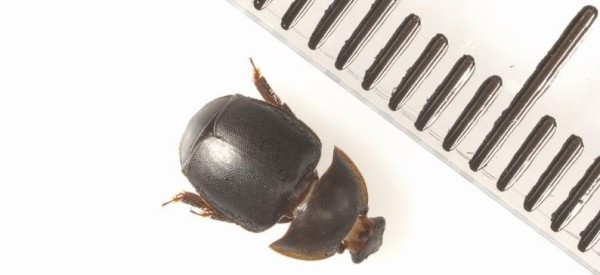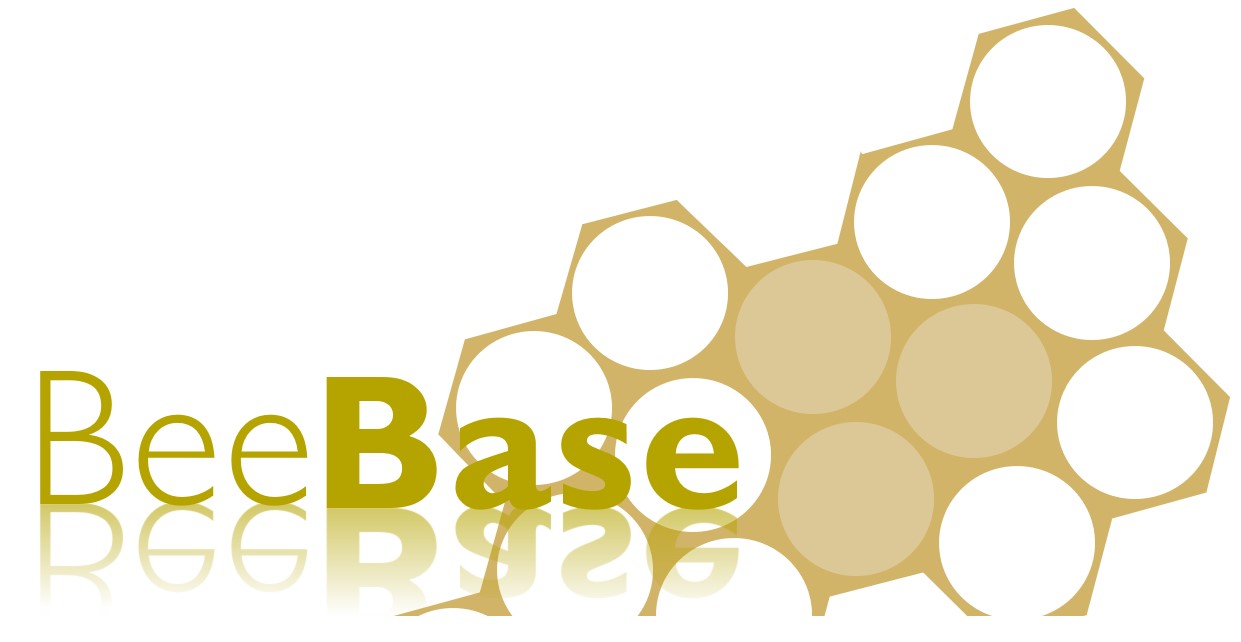 Life stages of the Small Hive Beetle
Life stages of the Small Hive Beetle
The Small Hive Beetle (SHB), Aethina tumida, is an invasive species originating from Africa which has proved to be a serious pest of honeybee hives in the USA and Australia. The SHB has been made notifiable within England and Wales by the Bee Diseases and Pests Control Order 2006 and the Bee Diseases and Pests Control (Wales) Order 2006.
Geographical Range
Africa
The small hive beetle is indigenous to Africa, and therefore widespread across the continent, particularly sub-Saharan Africa.
In 2002, it was reported in Itay-Al-Baroud, Egypt, and subsequently in a number of apiaries along the Nile Delta. However, a latter extensive apiary survey could not confirm its presence and no SHB damage to bee colonies has been reported since then.
Australasia
Confirmed in Australia (2002), and is now present in Queensland, New South Wales and Victoria. It is considered endemic in those States.
The Americas
In the USA SHB was first found in 1996 and the species formally confirmed in Florida in 1998. The beetle is now established across continental USA, all 48 contiguous states having found positive finds.
Detected in Canada in 2002 (Manitoba), 2006 (Alberta and Manitoba), 2008 (Quebec and Ontario), 2009 (Quebec), and 2013 (Ontario). In Ontario, (the most southern point) has an established SHB population with movement restrictions in place on colonies and apicultural material out of the region. It was also confirmed in Quebec (2013).
Mexico (2007) – SHB is established in at least eight states of Mexico, especially in the tropical states (e.g. Yucatan). In such areas, infestation levels can be extremely high with hundreds or even thousands of adult beetles found in a single infested hive.
Jamaica (2005) – Low impact to date.
Hawaii (2010) – Devastating impact on the local beekeeping industry; in particular on the queen rearing industry.
Cuba (2012) – A. tumida is currently present in the provinces of Villa Clara, Cienfuegos, Matanzas, La Havana, Mayabeque, Artemisa and Pinar del Rio and expected to extend to the whole country.
El Salvador (2013) – A follow-up survey in December 2014 detected SHB in only 68 out of 1700 hives suggesting a localised outbreak to date.
Nicaragua (2014) – reported in Rivas, currently unknown if established or localised.
Brazil (2015) – In March 2015, a swarm of honey bees (Apis mellifera) was captured and held in the apiary of the Beneficial Insects Laboratory, Department of Entomology and Acarology of the Graduate School of Agriculture "Luiz de Queiroz ", University of São Paulo (USP). Days later, 20 adult females of the small hive beetle were detected in the crate containing the captured swarm. No larvae were found and no apparent damage was observed in the hive. At the beginning of the investigation, the apiary included 6 hives of honey bees (Apis mellifera) and 40 stingless bee hives. The remaining hives showed no presence of beetles.
Europe
Portugal (2004) – SHBs were intercepted in a shipment of queens from the United States into Portugal in 2004. All colonies in the destination apiary were destroyed and the surrounding soil treated with insecticide.
Italy (2014) –On September 11 2014, the Italian Istituto Zooprofilattico Sperimentale delle Venezie, National Reference Laboratory for Apiculture (IZSV) confirmed the first detection of the presence of Small hive beetle (SHB) in South West Italy, in the port city of Gioia Tauro. A second outbreak was confirmed in Rosarno, approximately 1 km from the first infested apiary on September 17th 2014. In this outbreak, 4 colonies were found to be infested. Since then further infested apiaries have been confirmed. Further details will be made available as the situation evolves on the IZSV website or the ANSES European Union Reference laboratory for honey bee health website.
03/08/16 - The first outbreak in Cosenza was discovered in the framework of the surveillance for Aethina tumida carried out in Calabria region in an apiary composed of 12 nuclei. This outbreak is around 100km north of the initial protection zone. SHB has been found in four apiaries within a 3km radius all belonging to the same beekeeper. Clinical controls are being carried out in other apiaries in a 1 km radius zone from the primary outbreak with negative results so far. Epidemiological investigation is under way to ascertain the path of introduction in the primary outbreak.
03/03/17 - Commission Implementing Decision was published. It extends control measures on Calabria until the end of March 2019 while the safeguard measures on Sicily are lifted as a result of 2 years of surveillance without finding any cases of Small hive beetle since the initial outbreak. It is important that all beekeepers practice 'safe sourcing' of bees and ensure that all import guidelines (England) are adhered to in order to help mitigate risks of an exotic pest incursion in the UK.
31/12/20 – A further outbreak in Sicily in June 2019 meant that the ban on exports from Italy was reintroduced for Sicily. The safeguard measure for both Sicily and Calabria have been extended to April 2021. The prohibition on exports to the UK from these two regions continues after the end of the transitional period.
Contingency Measures: when SHB was first discovered in Italy in 2014, urgent measures were implemented to assess the extent of the outbreak. This included a complete tracings (that is tracing back sales and movements of bees from the area), with the intention of eradicating and controlling the spread in line with EU legislation and safeguards. At the time, measures included the destruction of all colonies in apiaries where the beetle was found and all soil surrounding the hives in the apiaries was ploughed in and treated with a soil drench. Please see the IZSV website for the current Italian situation on surveillance and containment efforts.
Asia
Philippines (2014) – Managed colonies of introduced European honey bees were confirmed severely infested in Lupon. Control measures are currently being undertaken, e.g. prohibiting inter island movement of bees.
Current Status
Currently neither Aethina tumida nor Tropilaelaps spp. (see BeeBase Tropilaelaps page) have been found in the United Kingdom. If either were introduced they could potentially cause major damage in certain parts of the UK or Europe, if they became established. Both parasites are statutorily notifiable (see relevant legislation here). The small hive beetle is now confirmed present in Italy, but not so far elsewhere in Europe. Tropilaelaps mites are currently thought to be absent.
The NBU Inspectorate carries out each year a comprehensive risk based surveillance programme for these pests in 'At risk' apiaries or zones, such as around ports, airports, container depots. Beekeepers are strongly encouraged to monitor their hives for their presence, all the more important now that SHB has been confirmed in Italy. Suspect samples can be sent to the NBU laboratory for diagnosis. In addition to support this contingency planning and preparing for the arrival of identified exotic threats is an integral part of our work.
Supporting Research
The NBU are currently investigating potential controls for the Small hive beetle. For more details please see the Bee Research Projects pages.
Contingency Plan
- Pest Specific Contingency Plan Small Hive Beetle and Tropilaelaps mite
- Cynllun Wrth Gefn ar gyfer Pla Penodol Chwilen Fach y Cwch Gwenyn a gwiddonyn Tropilaelaps
Defra have also completed a risk assessment on the potential for small hive beetle to be associated with produce and other plant products from Italy, and the document can be read here.
 A millimetre scale showing the approximate size of an adult Small Hive Beetle
A millimetre scale showing the approximate size of an adult Small Hive Beetle
Further Information
- NBU advisory leaflet The Small Hive Beetle – A serious new threat to European apiculture;
- The World Organisation for Animal Health OIE chapter on Small hive beetle;
- The European Reference Laboratory's (EURL) advisory leaflet;
- The European Food Safety Authority (EFSA) has published an extensive report which details methodologies on SHB diagnostics, visual inspection in a colony and beetle mitigation through traps, chemical and husbandry methods;
- The 2010 article in Biologist: Small hive beetle, the next threat to British honey bees (pdf)
